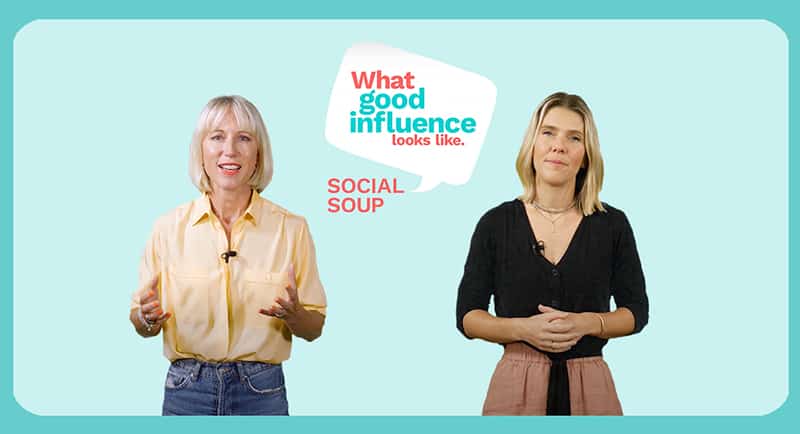The eighth video in Social Soup‘s What Good Influence Looks Like content series discusses 10 common mistakes to avoid in influencer marketing.
A survey of over 200 Australian marketers revealed that 75 of them have witnessed or experienced influence done poorly.
Here are the top 10 common influencer marketing pitfalls you should avoid to amplify the effectiveness of your campaigns:
1. Isolation versus Integration: Bad influence occurs when influencer campaigns are disconnected from overall marketing efforts. To avoid this, align influencer campaigns with overall marketing strategies for increased impact and consistent messaging across channels.
2. Contrived and Controlled Content: Influencer campaigns can suffer when content feels forced or overly controlled. To combat this, prioritise authenticity by giving influencers creative freedom to showcase your brand in a genuine and organic manner.
3. Influencer-First Approach: Instead of solely focusing on influencers’ reach, understanding target audiences is paramount. Influencers serve as conduits to connect authentically with those audiences.
4. Transactional Relationships: Relying solely on financial transactions when working with influencers can hinder long-term success. Seek partnerships that align with your brand values and goals for more meaningful collaborations.
5. Neglecting Technology: Utilise tracking, vetting and first-party data to better understand creators and measure their impact. Move away from manual processes to leverage technology for more efficient influencer marketing.
6. Overwhelming Workload: Spending excessive time searching for creators or managing influencer posts can be overwhelming. Focus on building partnerships with clear collaboration and shared responsibilities to alleviate this burden.
7. Inadequate Creative Vetting: Creators chosen for influencer campaigns should align with your brand values. Thoroughly vet them based on factors such as brand safety, audience demographics, aesthetic fit and authenticity.
8. Holistic Audience Perspective: Understand that different messages and advocacy across various channels contribute to the overall impact. It’s not just about a single platform or audience segment.
9. Accountability and Measurement: Demand transparency from influencers and establish clear performance indicators. Track metrics like reviews, content reach, engagement and conversions to measure the success of influencer campaigns.
10. Embracing Influence: Instead of viewing influence negatively, recognise it as a valuable marketing tool. When executed properly, influencer marketing can significantly benefit your brand.
Influencer marketing is a powerful strategy when approached thoughtfully and strategically. By avoiding these common mistakes, you can achieve maximum impact and message consistency for more successful campaigns.
See Also: What Good Influence Looks Like: Five key areas for planning good influencer marketing
See Also: What Good Influence Looks Like: Moving from “influencer” to influence
See Also: What Good Influence Looks Like: TikTok in Omni-influence planning
See Also: What Good Influence Looks Like: Best practices for marketing on TikTok
See Also: What Good Influence Looks Like: Launching a new product
See Also: What Good Influence Looks Like: TGA Guidelines for influencer marketing
See Also: What Good Influence Looks Like: Uncovering the power of reviews
